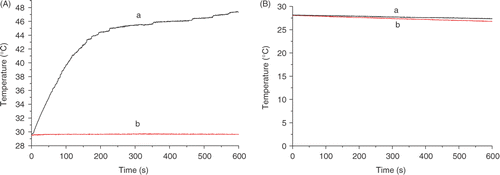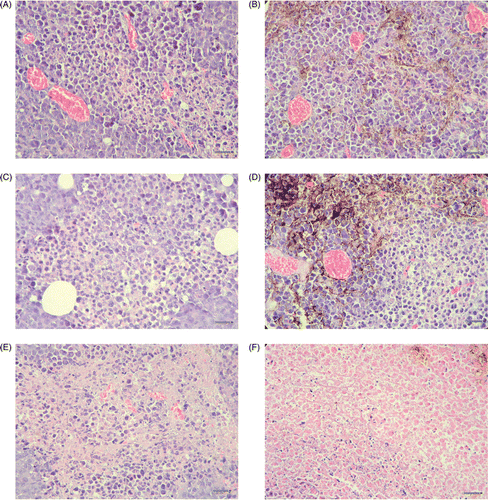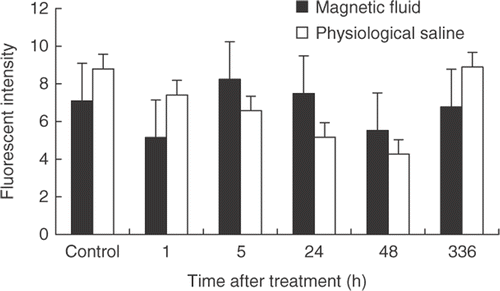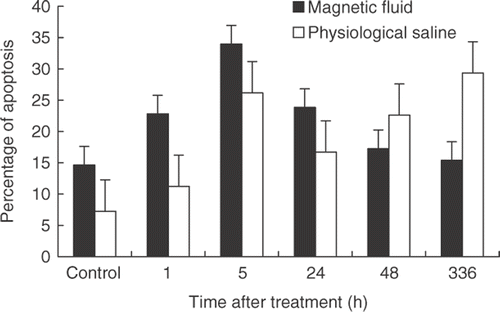Figures & data
Table I. The effect of hyperthermia with dextran magnetic fluid on grafted tumor growth.
Figure 1. The temperature curve examined by fiber optic detection: (A) intratumoral temperature; (B) rectal temperature; (a) injecting with magnetic fluid and exposed to magnetic field; (b) injecting with physiological saline and exposed to magnetic field.

Figure 2. The tumor tissues stained by hematoxylin-eosin (HE). (A) 1 h after injecting with physiological saline; (B) 1 h after injecting with magnetic fluid; (C) 1 h after injecting with physiological saline and exposed to magnetic field; (D) 1 h after injecting with magnetic fluid and exposed to magnetic field; (E) 48 h after injecting with physiological saline and exposed to magnetic field; (F) 48 h after injecting with magnetic fluid and exposed to magnetic field. (The black points in B, D and F were the magnetic fluid. The scale bars represent 50 µm. A little necrosis was shown near magnetic fluid in D. Compared with A, B, C, D and E, more nucleus disaggregation and cell broken were shown around magnetic fluid in F. The necrosis in E is near the center of the tissue, however, the necrosis in f is distributed around magnetic fluid.)

Figure 3. The vascular endothelial growth factor (VEGF) expression of tumor tissues at 24 h after treating with magnetic field stained by immunohistochemical method. (A) injected with physiological saline; (B) injected with magnetic fluid. (The scale bars represent 50 µm. VEGF was distributing in cytoplasm and intercellular substance. The intensity in B seemed higher than in A.)

Figure 4. The vascular endothelial growth factor (VEGF) expression in tumor tissues detected by flow cytometry assay (mean ± SD).



